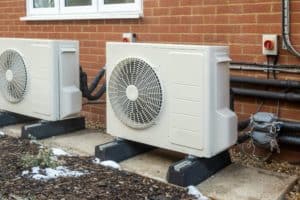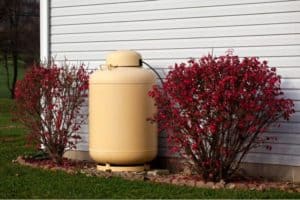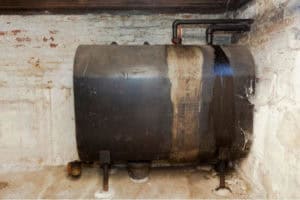Keeping your home warm during colder months can be expensive, but choosing the right heating system can make a big difference in your energy bills. With heating costs making up about 29% of household utility expenses, it’s crucial to find an efficient and cost-effective heating solution. Many homeowners search for the cheapest form of heating a house, but the right choice depends on your home, climate, and energy source. But which heating system is cheapest to run?
In this guide, we’ll explore different heating options, compare their costs, and help you decide to keep your home warm without breaking the bank.
Factors That Affect Heating Costs
Before diving into the cheapest heating systems, it’s important to understand the factors that influence heating costs:
- Energy Source Prices – The cost of electricity, natural gas, propane, and heating oil varies by region. Some areas have lower natural gas prices, making it a more affordable heating option, while others may find electricity to be the most cost-effective heating choice based on local rates and usage patterns.
- System Efficiency – Some heating systems are more energy-efficient, reducing overall costs. High-efficiency furnaces and heat pumps convert more energy into heat, helping homeowners save money on their monthly energy bills.
- Installation Costs – Upfront costs matter, but it’s just as important to consider the long-term heating system operating cost, which can significantly impact your overall savings.
- Climate Considerations – Your location affects the efficiency and cost-effectiveness of certain heating systems. For instance, heat pumps work best in moderate climates, while natural gas furnaces are more effective in colder regions.
- Home Insulation – A well-insulated home retains heat better, reducing energy consumption. Proper insulation in walls, floors, and attics can prevent heat loss and help your heating system operate more efficiently.
- Maintenance Costs – Some systems require more frequent servicing, which can add to overall expenses. Regular maintenance ensures your heating system runs smoothly and can help prevent costly repairs or replacements.
Comparing Heating Systems: Which Heating System Is Cheapest to Run?
Natural Gas Heating

Natural gas heating is often the most affordable choice for homeowners with access to a natural gas supply. Gas furnaces are efficient, provide consistent heat, and have lower operational costs compared to electric heating.
- Estimated Annual Cost: $952 (According to NEADA)
- Pros: Low fuel cost, reliable, high efficiency
- Cons: Requires gas supply and proper ventilation
- Best For: Homeowners in areas with an existing natural gas infrastructure
Many modern gas furnaces operate with an efficiency rating of over 90%, meaning most of the fuel is converted into heat. This reduces energy waste and lowers heating bills, making it one of the best options for cost-conscious homeowners.
Electric Heat Pumps

Electric heat pumps are an excellent alternative, offering both heating and cooling. They are highly efficient, particularly in moderate climates, and can reduce electricity use by up to 50% compared to traditional electric resistance heating.
- Estimated Annual Cost: $1,328
- Pros: Energy-efficient, provides cooling in summer, eco-friendly
- Cons: Higher upfront cost, less effective in extreme cold
- Best For: Homes in mild to moderate climates looking for year-round efficiency
Heat pumps work by transferring heat rather than generating it, which makes them highly efficient. However, in extremely cold climates, they may struggle to extract enough heat from the outdoor air, making them less effective without supplemental heating.
Propane Heating

For homes without access to natural gas, propane heating is a viable option. While slightly more expensive, propane furnaces can still offer cost savings compared to electric heating.
- Estimated Annual Cost: $1,828
- Pros: Efficient heating, widely available
- Cons: Higher fuel costs, requires storage tank
- Best For: Rural areas where natural gas is unavailable
Propane heating systems operate similarly to natural gas furnaces, but the cost of propane fuel fluctuates more significantly. Homeowners relying on propane should monitor market prices and consider pre-buying fuel during lower-cost seasons.
Heating Oil

Oil furnaces are common in areas where gas infrastructure is unavailable. However, heating oil tends to be the most expensive option due to fluctuating fuel prices.
- Estimated Annual Cost: $2,115
- Pros: Effective in extreme cold, long-lasting systems
- Cons: High fuel costs, requires regular maintenance
- Best For: Homes in colder regions with no access to natural gas or propane
Heating oil prices are subject to global market changes, making it harder to predict long-term costs. Additionally, oil furnaces require regular maintenance and fuel storage, adding to the overall expense.
Wood and Pellet Stoves

Wood and pellet stoves provide an alternative heating option, especially for homeowners with access to affordable firewood or wood pellets. While they require manual operation, they can significantly reduce heating costs.
- Estimated Annual Cost: $1,000-$1,500 (varies by fuel availability)
- Pros: Renewable fuel source, lower operating costs
- Cons: Requires regular refueling and cleaning, uneven heat distribution
- Best For: Homes in rural areas with access to cheap or free wood
Modern pellet stoves offer increased efficiency compared to traditional wood stoves, with automated feeding systems that help regulate fuel consumption. However, they still require frequent maintenance and storage space for fuel.
How to Reduce Heating Costs Regardless of Your System
No matter which heating system you use, implementing energy-saving strategies and investing in energy-efficient heating systems can significantly lower your heating expenses.
- Use a Smart Thermostat: Automatically adjusting your home’s temperature based on your schedule can save up to 12% on heating costs.
- Improve Home Insulation: Adding insulation helps trap heat inside your home, reducing heat loss and lowering your energy bills.
- Perform Regular Maintenance: Cleaning filters, sealing air leaks, and servicing your heating system can improve efficiency and extend its lifespan.
- Consider Renewable Energy Options: Although solar heating and geothermal systems have higher upfront costs, they can provide substantial long-term savings.
- Seal Drafts and Windows: Small gaps around windows and doors let heat escape—sealing them helps improve your home’s energy efficiency.
- Use Ceiling Fans Efficiently: Running ceiling fans in reverse during winter redistributes warm air, keeping your home comfortable while using less energy.
- Adjust Thermostat Settings: Lowering the thermostat by just a few degrees can result in noticeable savings on your heating bill.
- Schedule Routine HVAC Inspections: Regular check-ups ensure your heating system is running efficiently, preventing costly repairs and energy waste.
Conclusion
The cheapest heating system depends on your location, energy prices, and home setup. Natural gas heating is generally the most cost-effective option, while heat pumps offer excellent efficiency. Propane heating can be a good alternative where natural gas isn’t available, but heating oil is the most expensive. Wood and pellet stoves offer budget-friendly heating for those with access to affordable fuel.
A thoughtful home heating comparison and adopting energy-saving habits can help you keep your home warm while minimizing costs. Evaluating long-term expenses and making energy-efficient upgrades will help you maximize savings on heating bills.



